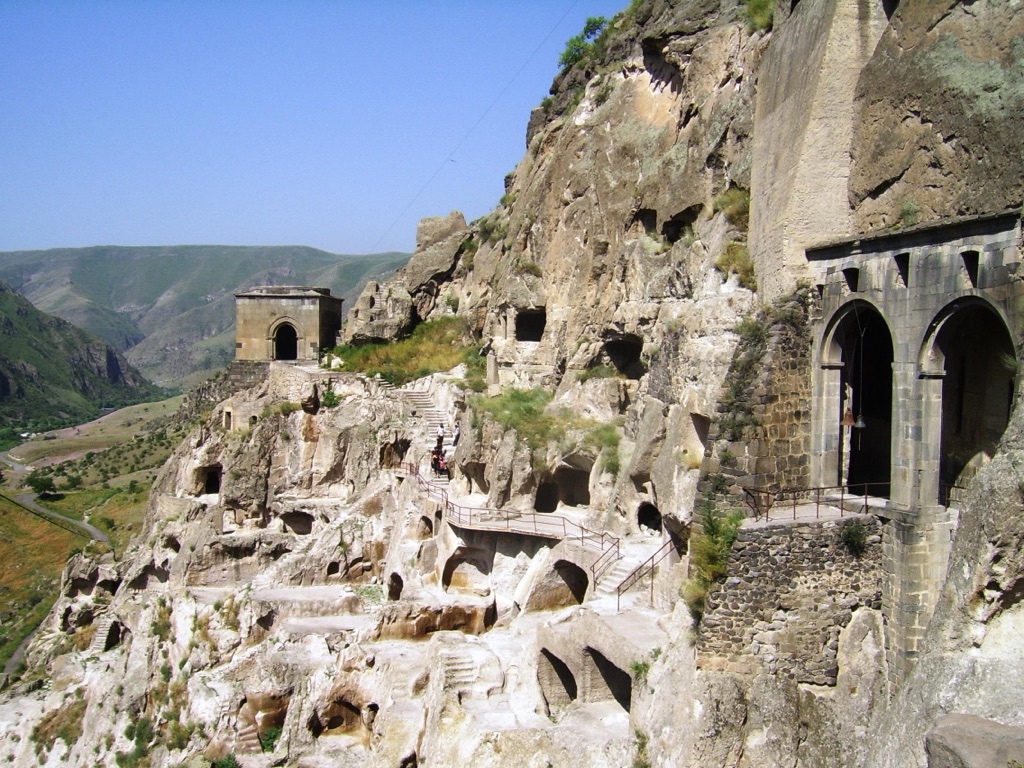Summary
Introduction to Vardzia’s Historical Significance
Vardzia is not just a cave city in Georgia; it’s a sprawling multi-level complex carved into the Erusheti Mountain. Erected in the 12th century, this remarkable feat of engineering was intended as a fortress against the Mongol hordes. The ambitious project, sanctioned by Queen Tamar, aimed to provide a steadfast sanctuary during tumultuous times. Several thousand monks could dwell here, their numbers reflecting the city’s once-vast scale. Vardzia beckons to history buffs and curious travelers alike, offering a rare glimpse into Georgia’s proud medieval past.
Get your dose of History via Email
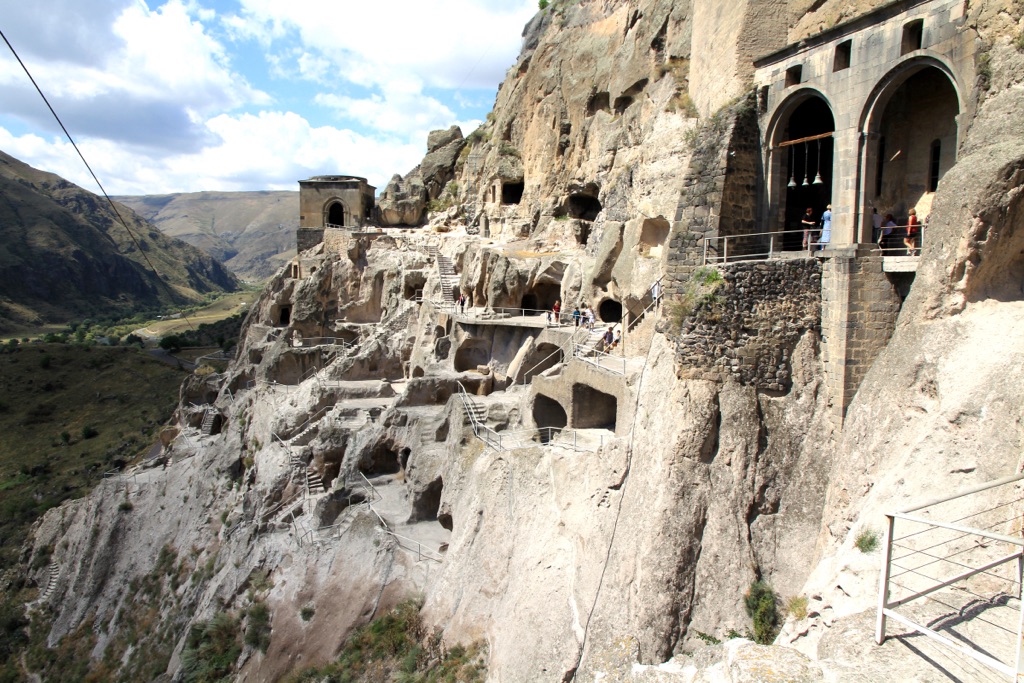
Exploration of Vardzia’s Architectural Marvels
Imagine a labyrinth of passages, halls, and 600 interconnected rooms, all hewn by hand from solid rock. Vardzia’s architectural brilliance is evidenced by its enduring structures. From the church with its stunning frescoes to the complex irrigation system, every detail tells a story of resourceful design and communal living. Visitors can walk the same steps as ancient monks, marveling at wine cellars, pharmacies, and storerooms that supported a self-sufficient lifestyle. This site showcases the synergy between human endeavor and the harsh Georgian terrain.
Vardzia’s Modern Significance and Preservation Efforts
Today, Vardzia has transcended its medieval origins to become a symbol of Georgia’s resilience and a testament to its heritage. It’s a treasured historical monument, drawing in those who seek to connect with the past. Yet, Vardzia faces conservation challenges due to natural decay and human impact. Preservation efforts have become a collaborative priority to ensure future generations can experience the awe of this place. As a place of pilgrimage and education, Vardzia continues to play an essential role in understanding Georgia’s complex history and cultural identity.

Historical Background of Vardzia Georgia
The Architectural Inception under Queen Tamar
Vardzia, the majestic cave complex, emerged from Georgia’s heartland during the reign of Queen Tamar in the 12th century. It began as a strategic defense against invaders, soon turning into a flourishing monastic center. The city reflected Queen Tamar’s vision of strength and piety, housing thousands of monks and their sacred artworks. The rock-hewn architecture of Vardzia withstood time and nature, preserving Georgian history within its walls.
The Monastic Life and Artistic Expression
Life in Vardzia was a blend of devotion and artistry, echoed in the frescoes that adorn its church walls. Monks here lived a life dedicated to faith, evident in the religious texts and iconography they left behind. The artworks at Vardzia are not just religious symbols. They narrate stories, immortalizing the monastic community’s spiritual essence and Queen Tamar’s indelible influence on Georgia’s ecclesiastical and cultural landscapes.
The cave city boasts of an ingenious layout, replete with chapels, libraries, and living quarters, all ingeniously integrated into the natural terrain. The city’s complex irrigation system supplied water to its inhabitants, showcasing advanced engineering skills. The remnants of Vardzia’s once bustling corridors still resonate with the creativity and ingenuity of its builders, who transformed the rocky landscape into a self-contained world.
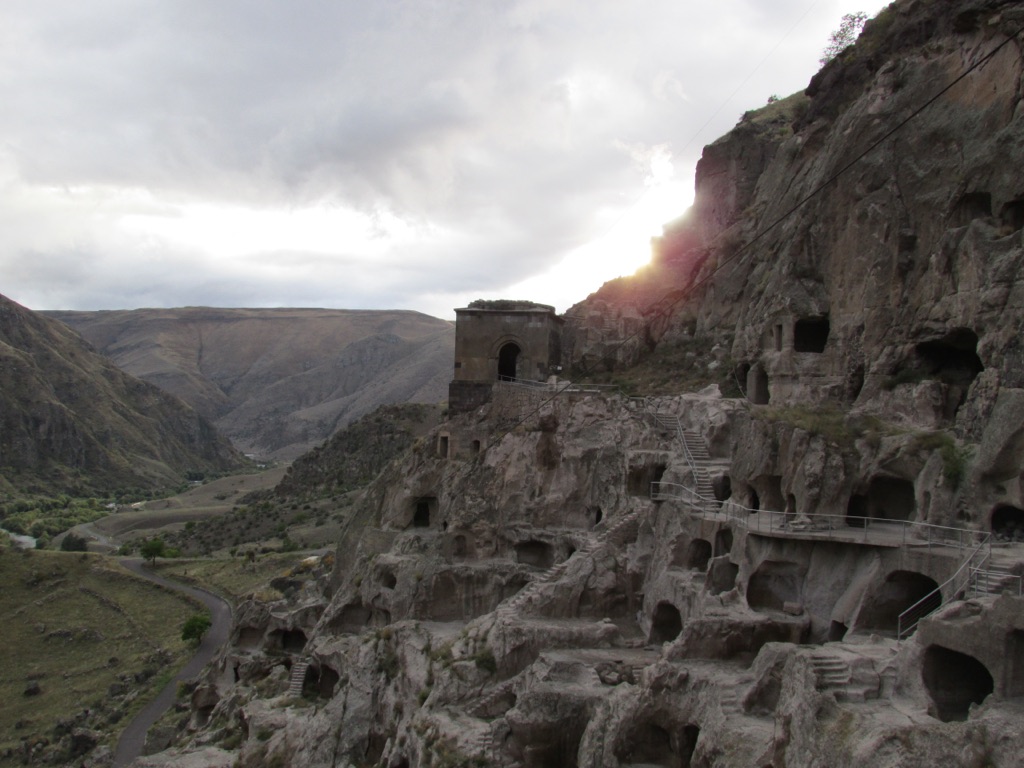
Military Significance and the Mongol Threat
Vardzia’s military history is deeply interwoven with its cultural narrative. The monastery complex served as a hidden fortress, safeguarding Georgia’s border from the Mongol threat. Its tunnels and strategic location facilitated a formidable defense, contributing to the ingenuity of Georgian warfare strategies. For a time, Vardzia seemed invincible, with its elaborate defense mechanisms repelling various foes seeking to penetrate the nation’s heartland.
Through the centuries, Vardzia has faced numerous threats, including earthquakes and invasions that have led to partial destruction. Nonetheless, the site continues to stand proudly as an emblem of Georgian resilience. Nowadays, Vardzia is a testament to the country’s rich history, inviting scholars and visitors alike to explore its depths and uncover the layers of narratives etched into its cavernous folds.
The Discovery of Vardzia Georgia
Revealing a Hidden Wonder
Vardzia’s reveal to the modern world wasn’t a singular event but rather a gradual reintroduction. For centuries, local shepherds knew of the cave city carved into the Erusheti Mountain. In the larger historical context, however, the site seemed almost forgotten until the 19th century, when explorers and historians began documenting the splendor of Georgia’s southern region. Their detailed accounts and sketches transported Vardzia from local folklore to the broader public consciousness.
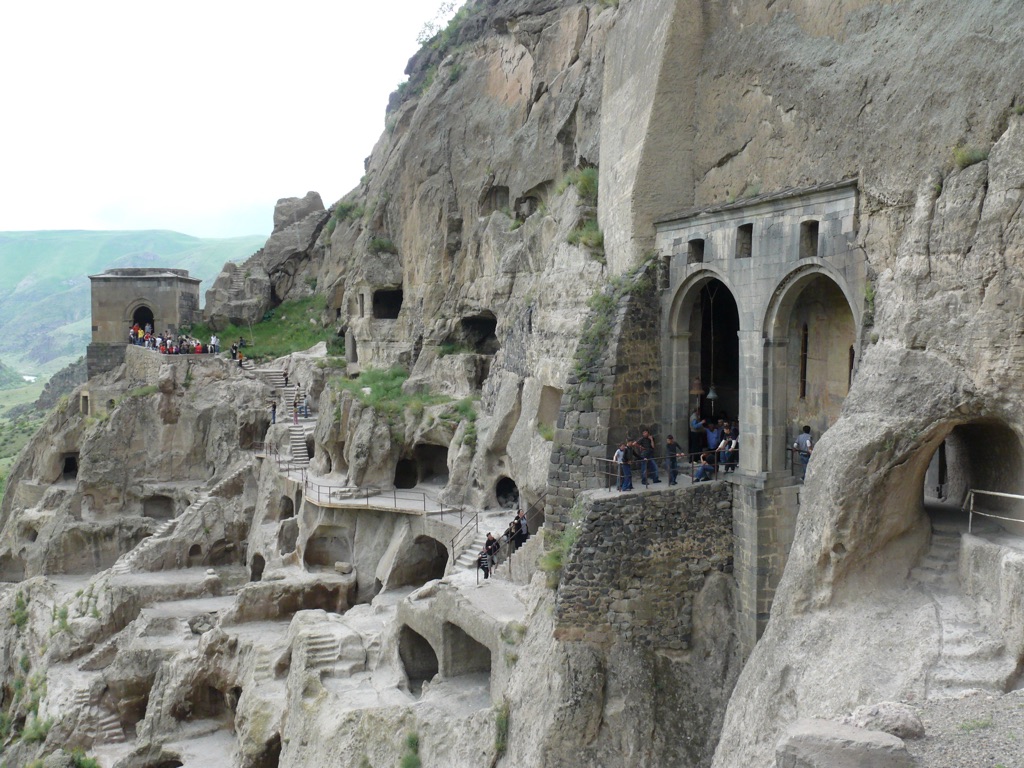
The Role of Archaeologists and Historians
Intensive archaeological studies and explorations took root in the 20th century, spearheaded by Georgian historians. They began mapping the monastery complex, analyzing its frescoes, and examining its sophisticated water irrigation system. These researchers pieced together a timeline of Vardzia’s evolution from strategic stronghold to monastic sanctuary. Their efforts unveiled the city’s rich tapestry of history, religion, and art to a global audience.
As comprehensive studies unfolded, evidence surfaced of Vardzia’s role during the Mongol invasions. Defensive tunnels and storerooms underlined the strategic importance of the site. Findings suggested that the complex was not only a monastic retreat but a fortress prepared for prolonged sieges. The discovery of these details shifted the historical understanding of Vardzia’s multifaceted significance.
Queen Tamar’s Influence Highlighted
Integral to Vardzia’s rediscovery was the acknowledgment of Queen Tamar’s impact on its construction and prominence. Her governance marked a period of renaissance for Georgia, with Vardzia standing as a prime example. The unearthed inscriptions and artifacts attributed to her period provide insight into the era’s culture and governance, accentuating her legendary status in Georgian history.
Today, Vardzia captivates visitors with its resilience and the historical narrative encapsulated within its walls. The monastery complex, once a hidden gem, is now a key archaeological site. It continues to be explored and studied, revealing layers of history that have survived the sands of time. This ongoing discovery process ensures that Vardzia will enthral future generations, linking them to Georgia’s illustrious past.
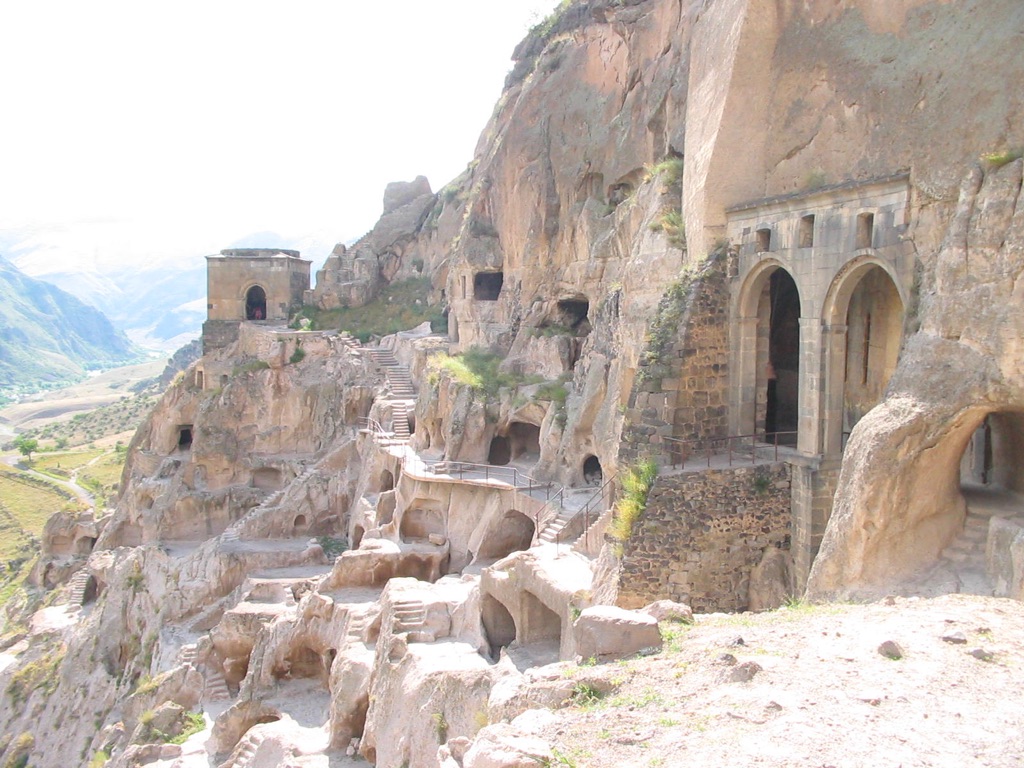
Cultural Significance, Dating methods, Theories and Interpretations
The Nexus of Georgian Spirituality
Vardzia sits as a formidable expression of Georgian monastic life and spirituality. Its numerous chapels, enduring frescoes, and secluded cells delineate a chapter when faith was central to the national identity. The cave city stands as a testament to Georgia’s cultural resilience and its fierce independence from neighboring influences. Its layout echoes the eremitic lifestyle, promoting a community centered around contemplative living and religious devotion, clearly showcased in its architectural narrative.
Unlocking Vardzia’s Timeline
Archaeologists have implemented various dating methods to demystify Vardzia’s construction timeline. Among these, radiocarbon dating helps archaeologists ascertain when artisans carved the caves. This method analyzes organic materials left behind, such as wood remnants from support structures. It indicates the 12th century as the probable time of Vardzia’s rise, aligning with the reign of Queen Tamar. These findings intertwine with historical records, corroborating a timeline of significant political and religious developments in Georgia.
However, some areas of Vardzia’s past remain veiled in mystery. The exact reasons for its swift desertion and the full extent of its functional layout are subjects of ongoing research. Theories suggest a combination of factors, including military advances reducing its strategic value and changes in religious practices. Plus, natural disasters may have played a critical role in its abandonment. Scholars are piecing together this puzzle through a combination of historical texts and archaeological evidence, slowly peeling back layers of history.
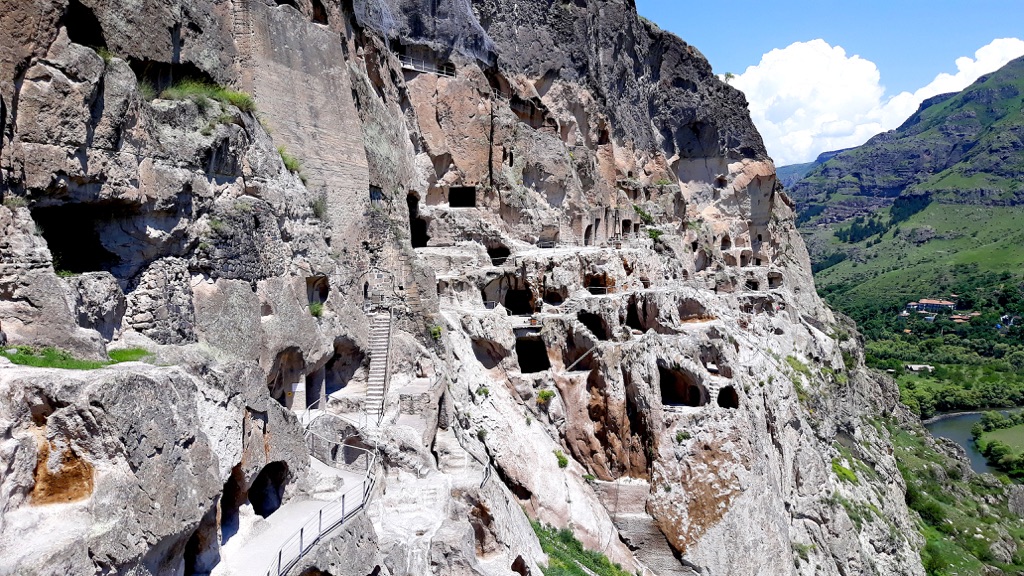
Interpreting Vardzia’s Iconography
Vardzia’s frescoes and inscriptions provide insight into the medieval Georgian worldview. These artistic treasures portray not only religious figures but also offer a visual storyline of the nation’s character and legends. Experts interpret these as a reflection of the cultural milieu of Georgia during Queen Tamar’s reign. These interpretations bridge historical gaps, giving us a colored window into the minds and hearts of the Georgian people at a time when the empire flourished.
Similarly, Vardzia’s role as a center for scholastic endeavors and manuscript safeguarding propels it beyond the mere physical. Myth and legend intermingle with documented history through stories scribed within its walls. These written accounts give credence to how Vardzia shaped national identity. They also detail cultural exchanges and intellectual pursuits that happened within these stone confines, bearing witness to the broader significance of this historical marvel.
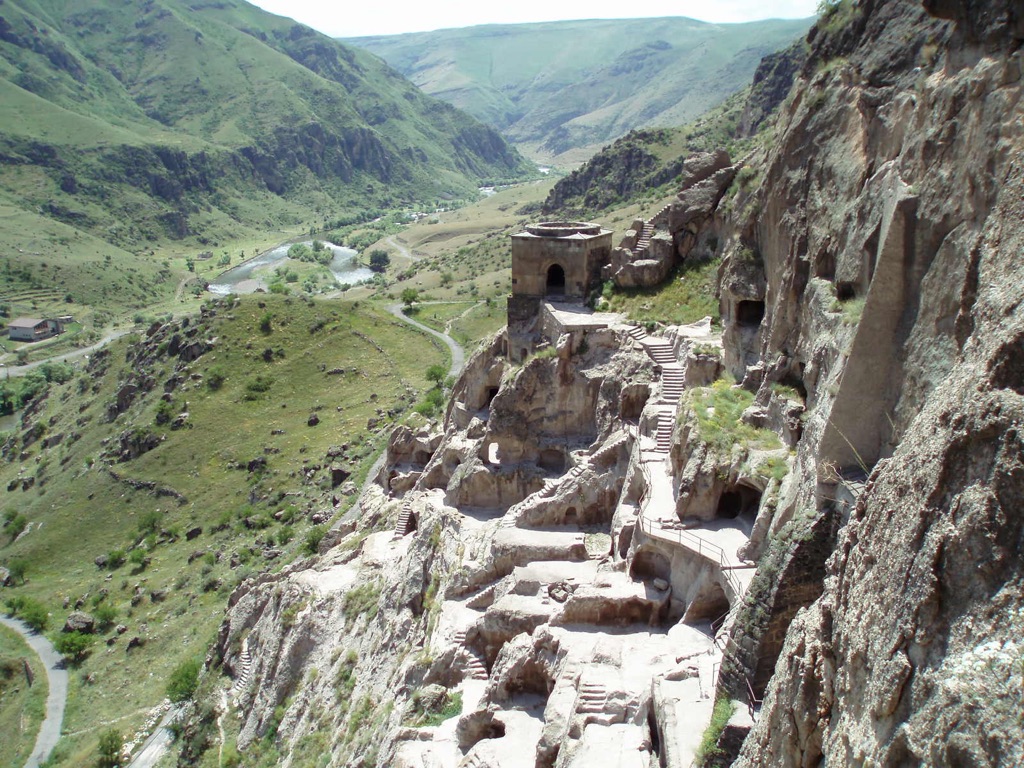
Conclusion and Sources
Vardzia remains a prominent cultural and historical artifact, encapsulating the essence of medieval Georgia. The cave monastery is not only an architectural marvel but also a bridge to the past, offering insight into the spiritual, intellectual, and artistic practices of the time. Understanding Vardzia’s origins, significance, and the mysteries that still linger has become a multidisciplinary journey, inviting historians, archaeologists, and tourists to delve deeper into its enigmatic tunnels and chambers. By preserving and studying Vardzia, we keep alive the stories and achievements of an empire that once stood proudly against adversity, a lasting symbol of Georgia’s enduring spirit.
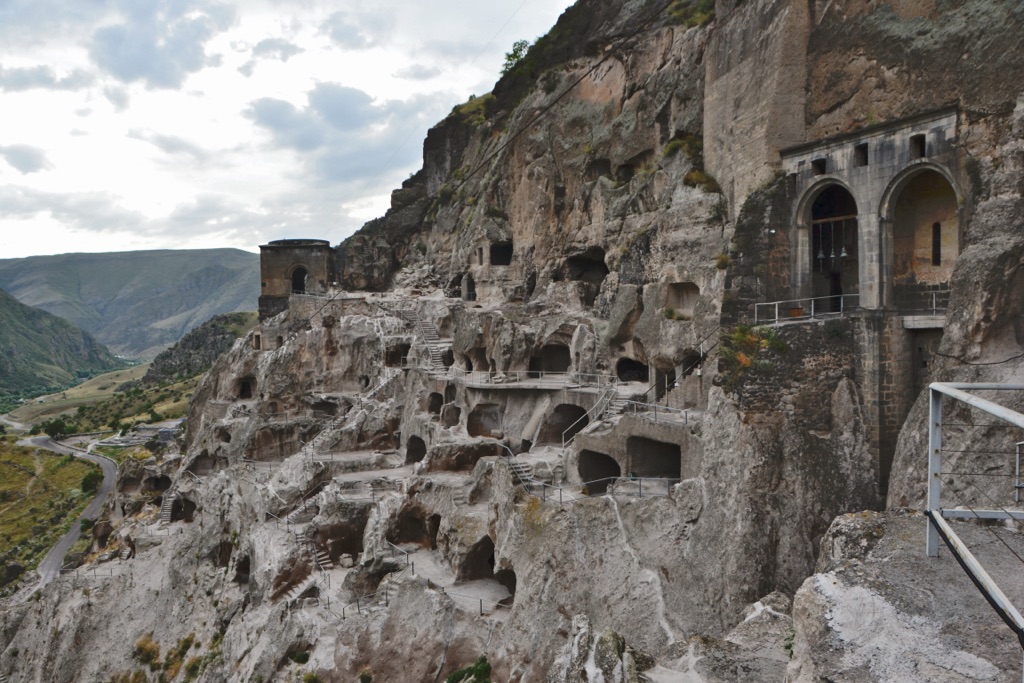
For further reading and to validate the information presented in this article, the following sources are recommended:
Or you can check any of these reputable archaeological and historical texts:
Bakhtadze, N., & Gabunia, L. (2015). ‘Vardzia Monastery Complex, Georgia’, National Agency for Cultural Heritage Preservation of Georgia.
Djobadze, W. (1992). ‘Early Medieval Painting in the Caucasus’, University of California Press.
Toumanoff, C. (1967). ‘Studies in Christian Caucasian History’, Georgetown University Press.
National Research Foundation of Georgia. (2018). ‘Radiocarbon and Dendrochronological Studies in Georgia’

